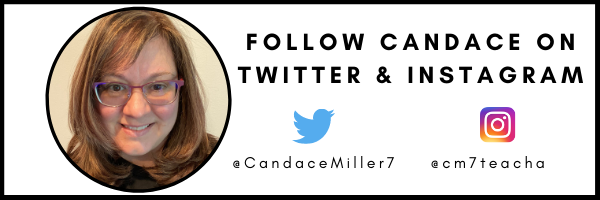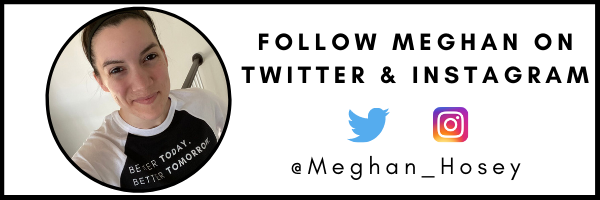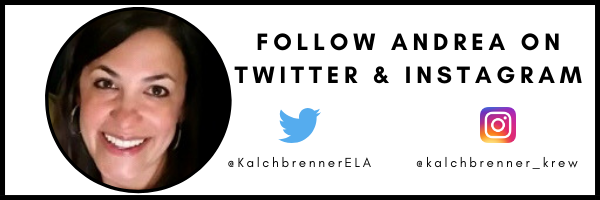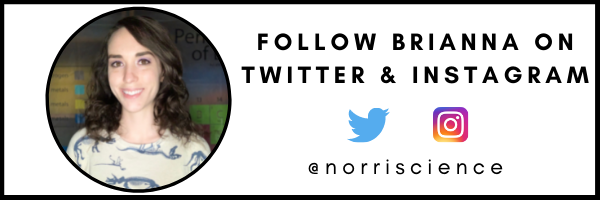TL;DR:
- This post includes reflections on a book study of Going Gradeless: Shifting the Focus to Student Learning by Elise Burns and David Frangiosa.
- This book provided insights about how you can shift the focus from grades to student learning!
- Each member of the book study shares their biggest takeaways from the book.
This past month I had the pleasure of hosting a virtual book study with Andrea Kalchbrenner and some of our incredible Teach Better Ambassadors. We read the book Going Gradeless by David Frangiosa and Elise Burns.
This book was an incredible read and led to amazing conversations. This is the perfect book if you are looking to shift the focus from grades to student learning. It was a step-by-step guide to implement these changes in your classroom.
This is the perfect book if you are looking to shift the focus from grades to student learning. It was a step-by-step guide to implement these changes into your classroom. Share on XWe all really enjoyed reading this book! Check out our biggest takeaways!
Meghan Hosey
This book has been incredible to read! I have always loved learning to learn and not for the grade. Although my classroom is mastery-based, I know that I am far from where I want to be in terms of grading. Every time I sit down to try to map out how I can integrate fewer grades into my classroom, I get stuck. I never know where to start. Until I read “Going Gradeless.” This book is like a step-by-step guide to implementation in the classroom. Starting something new and making big changes to your classroom can be scary! You never know what will work, what will go wrong, and what changes you will need to make.
One of my favorite things about this book is the fact that the authors walk us through their 6 years of implementation.
That’s right, 6 years. They make changes every year and are still making changes. Not only was I able to see the progression, I was reminded again that each time we jump in to try something new, there are challenges. But the challenges do not mean that we shouldn’t keep going. We will keep going, make the necessary changes, learn, grow, and be better.
As I look at next year, I can honestly say that I am not ready to go completely “gradeless.” But, after reading this book, I know that I am ready to make even more changes and move in that direction. It doesn’t always have to be all at once, but we have to start somewhere.
Andrea Kalchbrenner
This book is everything I hoped it would be…and more! The authors explain their reasoning for going gradeless, give step-by-step instructions for how to implement in any grade level classroom and type of school, and offer so many specific examples of rubrics and student feedback.
They were so honest in not only sharing the positive, but also sharing the hiccups along the way too. At the end of the book, there are a multitude of resources to help teachers as they transition their focus to student learning instead of student grading. There were so many “mic drop” quotables in this book for me, but one that I keep coming back to is:
“Gradeless does not mean students are not assessed. It does not mean that they aren’t held accountable. It doesn’t mean that there aren’t consequences for poor achievement. What it does mean is that they can take academic risks. The main goal of a gradeless classroom is to provide a learning environment that allows students to grow as learners without the constant fear of a single assessment having a devastating impact on their grade” (Burns & Frangiosa).
Isn’t that what our main goal is as teachers? We want our students to grow and enjoy the learning process, not have anxiety over a letter grade. I’m so excited to continue learning as a student myself on this “gradeless” journey.
Meghan Wells
As a high school English teacher, I am always faced with the question, “Why do I have to take this class? I already speak English.” This reality makes it difficult to get things like revising and deep critical reading to the point it needs to be when proficient or passing is “good enough.” I have been looking for ways to get my students to both take the deeper thought seriously, but not penalize them for not being there yet.
What resonated with me is both separating the standards out and making sure that students only get the standard when they are ready.
Also, the idea that, grades or not, this can be implemented in any type of classroom. When meeting with the author, he emphasized the six-year-long learning process that he and his colleagues took. He repeated that it was not an overnight process and even some things that made it to the book had changed.
I think that Going Gradeless is a great case study that gives a step-by-step process. If one wanted to implement the process, it is a hefty task that could take a few years. They have taken away the guesswork and some of the trial and error. They acknowledge the skepticism that some people may have and show you their failures and successes that eventually worked.
Brianna Norris
Every teacher has experienced that moment of sitting at their desk, grading tests, and realizing that their students haven’t learned. The failing grades get entered into the gradebook, and students are at the teacher’s door the next day asking, “What can I do to pass?” So they grab some extra credit, or hastily redo an old assignment from five weeks ago, hoping to squeeze a few more points out of it. The teacher enters these grades, that student barely passes, and the cycle continues.
The teacher above is me. And I’m sure it has been a lot of other teachers at one point or another. It is exhausting to repeatedly become a distributor of meaningless, arbitrary points when all you want to do is help your students learn the content and gain valuable skills. Something has to change to make school about learning and not about passing.
The authors of Going Gradeless know this struggle. They, too, witnessed their students doing enough work to pass, but also consistently missing key concepts of the class. So they got creative and eliminated the archaic 100-point scale from their everyday feedback on student work. The authors have been in the trenches and have survived to tell us about it. They don’t shy away from letting us know how difficult the process was and how often their ideas didn’t produce the desired results.
The book is several years’ work, which means that readers are getting the most current, effective iteration of their gradeless classrooms. This honesty is appreciated, as teachers shouldn’t begin this journey with the belief that it will be a quick, seamless transition. However, the authors show us that a teacher dedicated to improving their feedback and assessment can make this method work with the strategies outlined in the book.
My favorite of these strategies was assessing a student’s process, rather than their answer.
Sure, a correct answer is great, but not if the student doesn’t understand how they got it. Instead, the authors learned to assess the steps taken by their students as a way to understand their thinking and provide feedback about how to improve. For many of my students, a shift of focus to their effort and growth would make a huge difference in their confidence as learners.
The book’s examples of graded student work were also helpful since feedback is the key to student mastery of a standard. I also found the way that the authors wrote their grading rubrics for their students to be very useful and applicable. Because I use the Grid Method, the idea of going gradeless in my classroom fits into my overall philosophy.
However, the example rubrics, data tables, and graded work are useful in helping any teacher implement this strategy into their classrooms, regardless of their teaching style or content. I look forward to beginning to move my classroom (and hopefully my school) towards a more gradeless approach with the help of this book.
Nilmini Ratwatte-Henstridge
What resonated with me is the concept of “Content Mastery Check Points,” as we think about going gradeless for student assessment. It is refreshing to we aim towards emphasizing content knowledge required by Standards of Education and to provide engaging learning opportunities for students by the lessons we plan.
I loved the discussion and I have made it my goal to add the book to my reading list next after listening to the discussion. The emphasis placed on providing invaluable feedback to students rather than a grade got me thinking, since I love written feedback and oral feedback to guide student learning.
Holly Stuart
I have been questioning traditional grading practices for a few years now, and this book study gave me the opportunity to take a deep dive into not only the why, but more importantly the how.
I know that things need to change, and Going Gradeless gave practical tips on what did and didn’t work for the authors in their classrooms. It showed how the authors changed their approaches and strategies year after year. Basically, it showed the messy part of learning that teachers need to go through to become better at what they do.
Also, the ability to hear viewpoints from my fellow Teach Better Ambassadors was extremely helpful. We are all on this journey together, and even though the individual paths we take to get there may be different, knowing that our final destination is a common one makes the journey feel less daunting.
[scroll down to keep reading]Candace Miller
I am very impressed with the time and dedication taken by the authors of “Going Gradeless.” Elise and David definitely have a passion for making “grades” show what students have learned.
What stuck out to me most while reading their book is the focus on what each student is learning and documenting their progression throughout the year. I love that each student and their parent/guardian know exactly where their learning progression is and get the feedback they need to move forward with their learning.
I have been using SBG in my classroom for two years now. My next step is to implement a yearly focus model as outlined in the book. I’m currently taking the steps as outlined in chapter 9. My hope is to come up with six to ten main focus “power standards” that I will use for my grade reports throughout the year.
This year, my plan is to modify how I report semester and yearly grades.
My thought is that I will make a small step towards their yearly model by creating two categories in my gradebook. One category for the yearly power standards I choose and the other category for the state-identified standards. My reasoning for doing both categories is that being a state-tested subject, I can not only document progression with the power standards but also progression on the state standards.
When it comes time to review for the state test, I will have an outline of standards that each student needs to focus on. (Not that I want my classroom decisions to be driven by state testing, but for my students’ sake so they can perform to the best of their ability and graduate high school.)
Michelle Kasun
I began using Standards Based Grading last year, as it meshes so well with The Grid Method and mastery learning. This change made a huge impact on my classroom culture, as it truly shifted my students’ mindset from traditional A-F grades to learning. I consider that mindset shift the biggest win, as I saw students fully engaged in their own learning progression and growth while the question, “What do I need to do to get an A?” evaporated.
What David and Elise have done and explained so well in their book is absolutely brilliant. They’ve taken SBG a step further by eliminating the 1-4 and/or SBG terminology, replacing it with only the feedback necessary to move each student forward. Brilliant!
Feedback has always been the most important facet of learning but by removing any form of a ‘grade’, whether it be SBG terminology or letter grades, students can only focus on the feedback rather than the letter at the top of their paper.
Taking it one step further, by tracking ‘Habits of Scholarship’ such as participation, preparation, etc., these behaviors can still be addressed but used as points of discussion to drive growth (or lack thereof) rather than trying to average these with academics.
Implementing these two processes is where I plan to take my own classroom in the coming school year.
Going gradeless is a slow process, requiring baby steps, as we are all accustomed to traditional grades and change can be hard.
Along with this implementation, educating the parents and students is an integral part of success. My goal is to help my parents and students understand the ‘why’ behind the shift, flex the process when necessary, and show tangible evidence of improved growth. If all goes as planned, I can then continue to take ‘gradeless’ to the next level each successive school year.
Danielle Ramirez
I have been a science educator for many years and have seen pendulums swing (both literally and figuratively). The most fascinating pendulum has been about grades because, despite the efforts of many, the ball seems to be suck on the 100 point scale with super glue.
The Teach Better Ambassadors book study of Going Gradeless: Shifting the Focus to Student Learning Grades 6-12 written by Elise Burns and David Frangiosa has given me hope that there are more teachers willing to either chip away at the 100 point scale or build an entire new pendulum.
The authors teamed together to put a learning progression model into practice to devise a better system of communicating how students are performing on particular standards in the present moment. The most positive emphasis is focusing on the student’s current strengths and telling them (aka real-time feedback) the possible next steps to move forward in their learning.
While the book goes over their own progressive learning and implementation of the new evaluation system, there is an entire chapter dedicated to helping the reader begin the process of creating your own Learning Progression Model.
At first glance, this seemed daunting, but I realized that taking baby steps is better than sticking with the traditional “50 opportunities to fail” point scale. I already have taken some steps toward a more intentional evaluation of student learning. I have:
- Determined and acknowledged the “why” of an assignment. If it’s not aligned with the desired standard outcome, alter or remove the assignment.
- Used a four-point mastery scale for assignments. (The biggest benefit was students could self-evaluate.)
- Organized the Content Units using the Grid Method to show basic to advanced learning of the content standards.
- Put 0% weight on everything in the gradebook except for the unit grades which I manually imputed based on their learning evidence for the levels of the Unit Grid.
Next year’s goal is to use the Science and Engineering Practices as the evaluation criteria of students’ progression through the Next Generation Science Standards. I am a little nervous about this shift, but know that I have support and the grace of scientific learning (trial and error, repeat).
If you are willing to join in stepping away from the 100 point scale, I would highly recommend doing your own research (a good friend’s advice). The Grid Method and this book have been a great beginning for me. I would also recommend you start learning from Rick Wormelli, Carol Dweck, Jo Boaler, as well as our own team members Dave Schmittou and Kaitlyn Giordano.
Hope to see you at the next book study.
About Meghan Hosey
Meghan Hosey is a 7th grade math teacher in Nashville, TN and the Ambassador Program Coordinator for the Teach Better Team. She has a Masters degree in Curriculum and Instruction and is a Nationally Board Certified Teacher. She loves working with and connecting with fellow educators and is active on Twitter and Instagram.
Meghan loves spending time with her two dogs, husband, family, and friends!
About Andrea Kalchbrenner
Andrea is an Ambassador Coordinator for the Teach Better Team, has her bachelor’s degree in Secondary English Education and master’s degree in Reading, and has been teaching middle school and high school in the Chicago suburbs for over 13 years. Andrea enjoys networking and learning from other educators on social media. In addition, she loves being a Mom to her favorite little people Luke & Lilly, reading, and teaching dance.
About Meghan Wells
Meghan Wells is a high school teacher in the DFW area. After spending almost a decade in retail management and the financial services industry, Meghan has enjoyed education for the last 14 years putting a tech spin on all secondary levels of Language Arts.
Inspired by her 10 year old son, she has coached First Lego League, high school Esports, and continues to cultivate the (non ELA) interests of her young engineer. When she is not geeking out on edu or ed tech, you can find her reading a book, watching hours of home improvement shows, listening to true crime podcasts, or what she likes to call “serial crafting”.
About Brianna Norris
Brianna Norris is an eighth grade science teacher in West Texas. She has been teaching science for five years, and implementing Teach Better strategies for three of those years. She has found success using the Grid Method to differentiate for students of all abilities, as well as the Teach Further Model of incorporating internships and real-world skills into each unit.
So far, her students have been Olympians, National Park rangers, NASA astronauts, and Weather Channel correspondents. Brianna always attempts to keep student focus on learning, rather than on passing, and embraces failure as a first attempt at mastery. She has been amazed by the increase in student accountability and confidence since beginning this practice. When not teaching (or thinking about teaching), Brianna loves to read and hike, especially in National Parks.
About Nilmini Ratwatte-Henstridge
Nilmini Ratwatte-Henstridge teaches in Brampton, Ontario, Canada. She was born in Sri Lanka and immigrated to Canada with her family. As an Elementary School Teacher who is passionate about Equity, Social Justice, and Human Rights in education, she enjoys teaching the younger generation to be global-minded citizens.
Discovering the world by connecting with others is an opportunity that we have today in our society today and she loves meeting new people! She is always learning while traveling to understand the inter-connectedness of this beautiful earth we live in! Nilmini LOVES cooking great meals, watching movies, and the latest fashion trends! Family and friends are close to her heart as she looks forward to balancing social media and navigating professional learning communities in education to network globally this year!
About Holly Stuart
Holly Stuart is an 8th grade science and design teacher in South Carolina. Her educational passions include finding new and innovative ways to get more students interested in STEAM, student-inspired discovery through inquiry, and learning science by doing science.
In addition to her out-of-the-box thinking in the classroom, she has successfully implemented The Grid Method into her teaching practice which led to her becoming a Teach Better Team Ambassador. Holly is married to her high school sweetheart and is a mother to three children.
When not teaching, she enjoys traveling and being outside with her family. Some of their favorite outdoor activities include hiking, running, and biking. (Holly often brings her telescope, binoculars, and microscopes with her on hikes!) Her indoor hobbies include reading, coloring, and learning more about sketchnoting and drawing.
About Candace Miller
Candace Miller is an educator who believes that each student is capable of learning. She understands that connecting with students is key. Her passion is helping students with basic needs. Candace orchestrated the set up of a care corner in her school where students can go and shop for free items that they need. Her other passions include her family, camping, being in nature, reading and crafting (mainly using her cricut machine).
Candace started her education career in Lansing, Michigan. She took ten years away from education to be a stay at home mom for her son. Candace is currently teaching high school science in the Columbus area of Ohio where she is part of her school’s teacher leadership program. She previously taught ESL science in a sheltered science class. Candace is honored to be a founding ambassador for the Teach Better Family and is excited to collaborate with others in the Teach Better Family to be a better teacher.

About Michelle Kasun
Michelle Kasun is an educator who takes her responsibility of molding young minds very seriously. She has had the privilege of teaching many different subjects for grades 3-12 but just recently relocated from Oregon to Montana where she is finally teaching the age and subjects she is most passionate about – middle school ELA and SS.
Michelle is proud to be a founding Teach Better Ambassador. She is currently pursuing National Board Certification in Early Adolescence ELA and is also a certified fitness instructor. When she is not geeking out on all things education, she enjoys horses, hiking, group exercise and family time.
About Danielle Ramirez
I’m a wife and mother of 3 who is passionate about life long learning and dancing. I teach Chemistry (Foundational, Honors, and Advanced) to over 200 students yearly so after 16 years that would be over 3,000 relationships. I aim to have all those around me feel “safe, seen, and stretched.”










